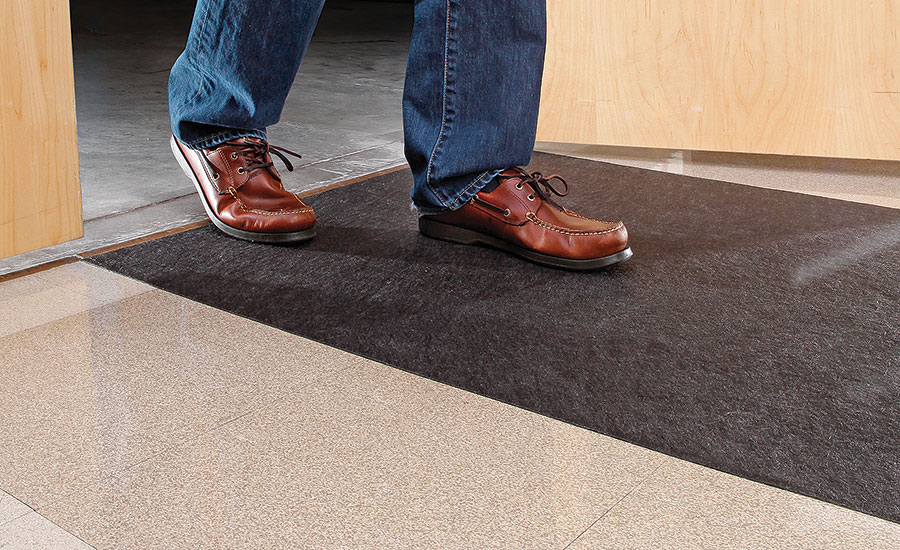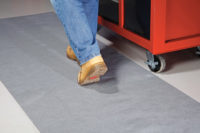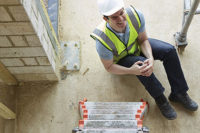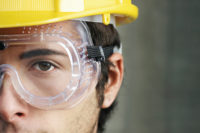Slips, trips and falls to the same level continue to be a top cause of lost workday injuries and workers compensation claims. Unlike many types of workplace incidents, slip and fall injuries aren’t isolated to a certain area or process. They can happen anywhere in and around the facility.
Like other safety risks; identifying potential problem areas, establishing procedures to prevent incidents and having the right tools and equipment in place are all keys to preventing injuries and minimizing hazards. For some facilities, floor safety issues can be addressed by enhancing the good housekeeping procedures that are already established throughout the facility. For others, more comprehensive plans may be necessary.
Written floor safety plans aren’t required by OSHA like hazard communication and other types of safety plans, but having a floor safety plan is a proven way to help prevent incidents. Here are six things to consider when creating a plan or improving good housekeeping procedures to prevent slip and fall injuries.
Identify problem areas
Problems with the walking surface contribute to more than half of all slip and fall incidents, according to the National Floor Safety Institute. It’s not just ice, snow or some other slippery liquid on the floor: uneven surfaces, deep cracks, loose floor tiles and rugs that don’t lay flat are also common problems.
In addition to the walking surfaces, consider lighting in each area. Sometimes a spill, step or slight variation on a walking surface cannot be easily identified because there isn’t enough light to see it. Talking with employees working in various areas can also help identify problems that a one-time walk-through may not uncover.
Spend time walking through each area of the facility, including parking lots, sidewalks, cafeterias and break rooms. Take pictures and good notes to identify problem areas that need to be repaired or where good housekeeping measures may need to be reviewed and updated.
Fortify entrances
Studies conducted by professional cleaning companies show that more than 90% of the dirt in a building is tracked in on people’s feet. That’s one of the reasons why entrance matting, grating, and other special floor preparations are so common in lobbies and in entranceways: they all help collect dirt to keep it from being tracked into other areas of the building. They also help prevent it from becoming a slip hazard.
Along with the dust and dirt, entrance matting and grating is commonly used to help collect rain and snow that also enters the building as people walk in. Unfortunately, many of the mats used in commercial applications are too short to dry everyone’s shoes before they step off that mat, they are not very absorbent and they can buckle or curl, creating trip hazards.
Providing canopies or awnings helps minimize the amount of rain and snow that enters the building. Replacing mats with entrance carpeting that is designed to capture rain and snow, or using specialized floor preparations that increase the coefficient of friction in wet areas are additional solutions.
Clean up spills immediately
It only takes one drip to create a slip and fall hazard. Too many people mistakenly think that that single drip or small leak will dry quickly. At other times, they are in a hurry or there isn’t anything readily available with which to clean it up.
A best management practice that is becoming common in the retail sector, especially in grocery stores and food courts, is to have someone stay with a spill until supplies can be brought to the area to clean it up. This is because it has been proven that in the time it takes to go get the supplies to clean up the spill, a person can slip and fall.
While that is appropriate in some situations, stocking paper towels, absorbents, mops, squeegees or other supplies in areas that are prone to leaks, drips and spills allows people to immediately clean up a mess quickly without having to wait for someone else to come back with needed supplies.
Sometimes, wet floors are a constant factor due to overspray, dipping or cleaning operations. In areas that are continually wet, consider whether slip-resistant footwear will help to minimize injuries. Work with footwear suppliers to match the shoes to the types of conditions that are present at the facility.
Downtime cleaning
It is not common for people to slip and fall on a clean, dry floor. Whenever possible, schedule routine floor mopping, scrubbing and other cleaning for times when there will not be traffic in the area and allow time for the floors to dry before people will walk over them. This minimizes the risk of people needing to walk over wet, slippery floors.
Take a second look at floor cleaning procedures. Washing floors with dirty water and mops allows dirt to build up, making floors more slippery. Another common problem with floor cleaning is the failure to follow the instructions that come with floor cleaning chemicals.
Review records
If slips and falls are a common type of injury, incident reports, near-miss reports and workers compensation claims can be helpful to track the areas where incidents occur. They can also help determine if they are happening at a particular time or with a particular group of employees. Knowing this can help narrow down root causes so that the problem is easier to eliminate.
In areas where snow and ice are common during winter months, evaluate snow and ice removal procedures to ensure that parking lots and sidewalks will be cleaned at least half an hour before shifts start and end, and that maintenance crews have ample supplies of ice melt, traction aids and tools available prior to the start of the winter season.
Preventative maintenance
Sometimes, simple changes in cleaning procedures can restore a floor’s surface or help avoid a costly replacement. Cleaning contractors and flooring manufacturers are two great resources for information on how long a floor should last and what can be done to prevent premature wear.
Eventually, things do wear out and floors will need to be replaced or resurfaced. Building these eventualities into preventative maintenance plans can make budgeting and scheduling the maintenance or replacement work easier.
Slips and falls don’t just happen. Like all injuries, there is a root cause and there are way to prevent these incidents. Proactively managing floor safety prevents these injuries and can lower insurance premiums.



